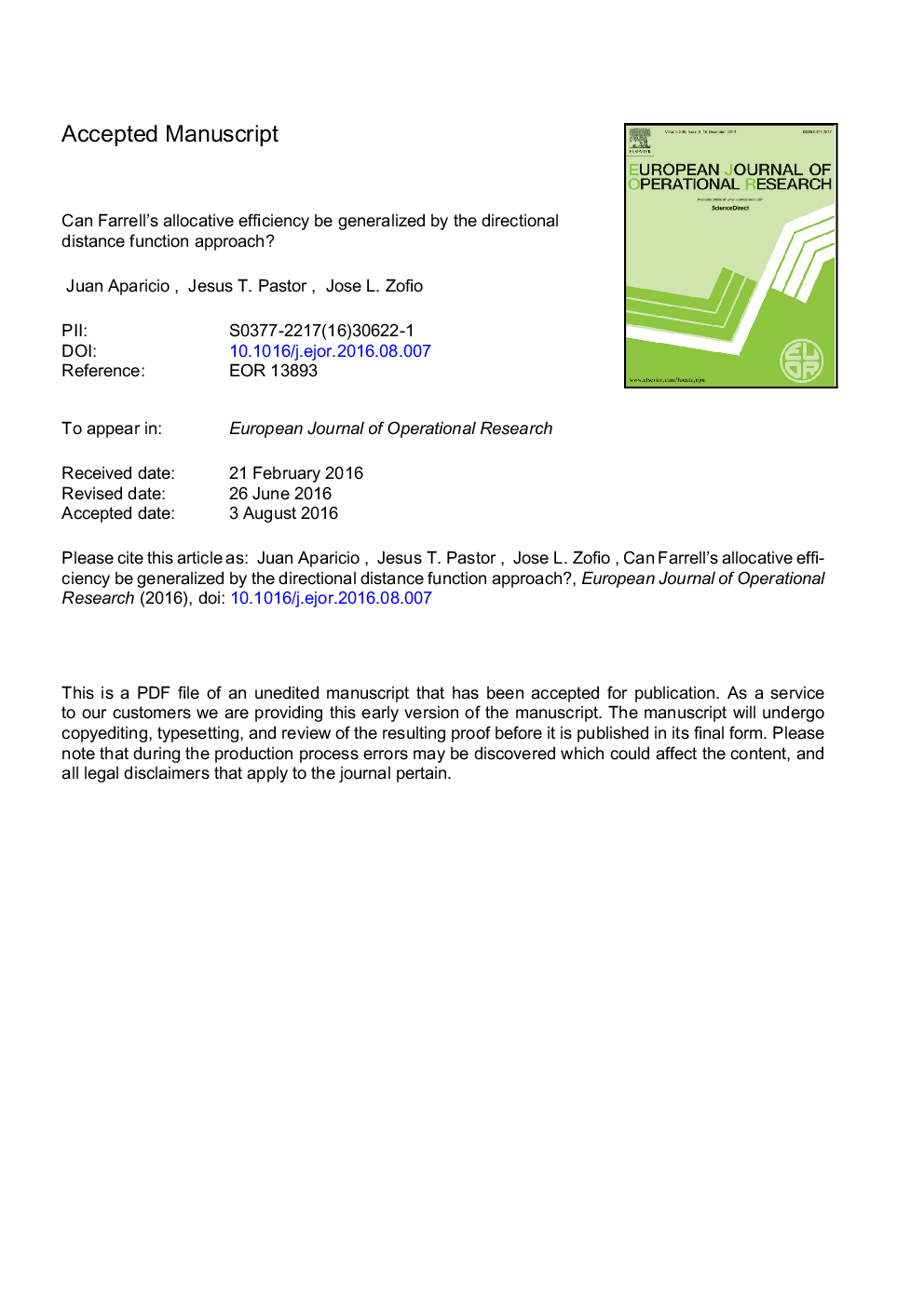| Article ID | Journal | Published Year | Pages | File Type |
|---|---|---|---|---|
| 4960143 | European Journal of Operational Research | 2017 | 26 Pages |
Abstract
Cost or revenue efficiency measurement based on the approach initiated by Farrell has received great attention from academics and practitioners since the fifties. Farrell's approach decomposes cost efficiency into two different sources, viz. technical efficiency and allocative efficiency. Technical efficiency is estimated by means of the Shephard input or output distance functions, while allocative efficiency is derived as a residual between cost or revenue efficiency and its corresponding technical efficiency component. The directional distance function (DDF) was introduced later in the literature to complete duality theory with respect to the profit function and as a generalization of the Shephard input and output distance functions. Considering the case of cost efficiency we show that, although the DDF correctly encompasses the technical efficiency component of the Farrell approach, this is not true for the allocative component. We show that both approaches yield different allocative (in)efficiency terms - unless technical efficiency is assumed, and how these terms are related. The practical implications of the multiplicative and additive approaches are discussed and illustrated.
Related Topics
Physical Sciences and Engineering
Computer Science
Computer Science (General)
Authors
Juan Aparicio, Jesus T. Pastor, Jose L. Zofio,
